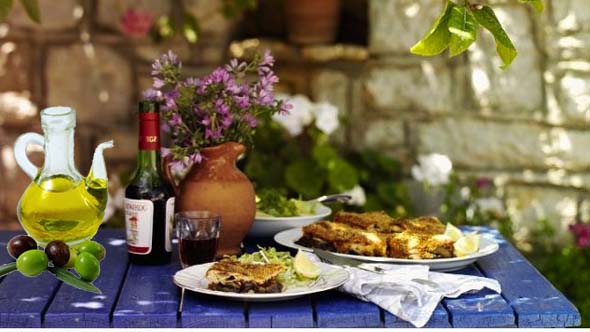
One of the most common ingredients in a Greek recipe is olive. You will find that a good cooking guide will help you determine just what type of olive you need to use for the dish you wish to make. Considered a fruit, the olive has become synonymous with Greece and the Mediterranean. They are grown in abundance in Greece and have been eaten since ancient times. Many still believe in the health benefits of black olives.
Olives come in a wide range of flavours. People who say they don’t like olives probably have never tried the many different varieties that are grown in Greece. Most people are familiar with black olives and green olives; black olives are the ripe fruit of the olive plant while green olives are the unripe fruit. Does that mean the green olives are not ready to eat? No. It simply means that a green olive will have a different texture and flavour.
The olive is usually named after the region in which it was grown. For example, the Kalamata olives are the most well-known in Greece. These are the olives that you will find in a Greek salad and they are usually big, green and juicy with a rich flavour that lingers on the tongue. Other olives, like cracked black olives, are found marinated in olive oil and oregano, a combination that brings out the flavour of the fruit. Tsakistes, a type of cracked green olive, is similar to the cracked black olive only they have been picked earlier. A cracked olive, incidentally, is one where the bitter pit has been removed and the olive soaked in water and a brine solution to help remove any bitterness that might remain.
Next to olives, olive oil is the most widely used ingredient in Greek cooking. You will find olive oil used in everything from salad dressings to pork recipes. It is the main source of fat in Greek recipes and has become so popular that you can buy olive oil in any grocery store around the World. Greek olive oil is expensive but is considered the best out there. The recipe has been perfected since the time of the ancient Minoans and the Greeks themselves consume most of what they produce.
Olives are typically harvested in late November and then pressed to extract the oil. While most processing plants are equipped with modern day presses, there are still some places in Greece that do it the old fashioned way. They use large stone and wooden presses that have been used for centuries to press the oil from the fruit. Modern plants use a high-speed centrifugal unit. Extra virgin olive oil is made this way and it is defined as oil from the first pressing of the olives. Olive oil made from subsequent pressing is labelled differently.
Pure and refined olive oil is produced through a high temperature extraction of the oil from the olive. It does not have the same flavour as extra virgin olive oil and it is usually mixed with extra virgin for its flavour. This type of olive oil produces a higher heat, making it the right type to use for frying foods. Using extra virgin olive oil to fry foods will ruin the taste of the oil and it can easily ruin the food you are trying to cook.
Pomace is the last of the olive oils. It is extracted from the bottom of the oil barrel and has been produced using a chemical extraction method. Soaps and other inedible products that contain olive oil usually contain pomace, so you definitely do not want to eat this type!
While fresh greens and olives are the most common foods used in Greek recipes, bread is a staple of Greek foods. Typically, a Greek bakery is busy all year round. It is usually eaten with every meal. Bread in a Greek meal can be dipped in olive oil, sauce or even coated with a variety of different foods such as tsatziki, a dip that is made of yogurt, cucumbers and garlic. This is the same type of dip that is used on gyros.
True Greek bread is made using grains that do not produce white flour. The darker breads and whole wheat types of grains are healthier and serves as an attraction of Greek food.
It is common to walk into a Greek bakery and find a variety of different breads on display year round. This is because the food that is served in a Greek meal could be determined by the time of year and whether there are any religious festivals taking place. For example, the Greeks celebrate Clean Monday, the first day of fasting that lasts the 40 days before Easter. They will eat unleavened bread, similar to pita, during this time. Hard bread is typically served in the morning and is dipped in coffee or whatever hot drink you are enjoying at the time.
Understanding how Greek meals draw upon basic ingredients is helpful when it comes to picking up the right ingredients for your recipe. The difference between olives and olive oils can make or break your meal. Hopefully, you are now armed with everything you need to know to understand just how important flavour and texture is in the Greek culinary
For the most part, Greek cooking is fairly straightforward, using seasonal items in all of the nation’s dishes.experience.
For original Greek Christmas recipes go to fetapita.com. There you can also publish your own Greek recipe and share it with the other users.
See all the latest news from Greece and the world at Greekreporter.com. Contact our newsroom to report an update or send your story, photos and videos. Follow GR on Google News and subscribe here to our daily email!



